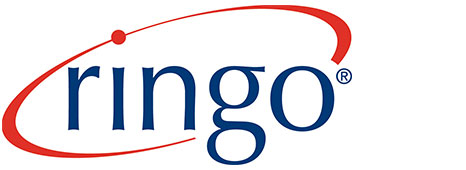How the Nursing Shortage Is Impacting Healthcare

The American nursing shortage is set to surge through 2030, with significant implications to the healthcare system overall. Although there are already three times as many nurses as doctors, experienced nurses are nearing retirement, and nursing schools lack the necessary resources to train the next generation during a time when one of the largest age groups, the baby boomers, will utilize the healthcare system the most.
Many factors have combined to create this shortage, and while state governments, schools, and organizations are working on solutions, there is still much to be done.
Effects of the Nursing Shortage
Insufficient staffing has been proven to lead to higher mortality rates, an increase in hospital readmissions, and nurse burnout—contributing to an overall lower quality of care.
Higher Mortality Rates
Multiple studies have confirmed that a shortage of nurses increases hospital mortality rates. A 2010 study titled “Implications of the California Nurse Staffing Mandate on Other States” compared patient outcomes between California, which has state-mandated nurse-to-patient ratios, and those without. It found lower nurse staffing ratios led to higher mortality rates.
In 2011, the New England Journal of Medicine published similar findings; mortality rates increased by 6 percent in facilities with an insufficient number of nurses, and because of shortages, nurses must take on additional patients. An article published in Lancet in 2014 reported that adding a single patient to a nurse’s workload increased the likelihood of a patient dying within 30 days of admission by 7 percent.
Increase in Hospital Readmissions
A study published in the global healthcare knowledge provider BMJ Journals discovered that if the patient-to-nurse ratio increased by one pediatric patient, there was an 11-percent increase in readmission within 15 to 30 days after discharge for medical patients, and a 48-percent increase in readmission for surgical patients. Meanwhile, another analysis explored the relationship between nursing staff and the Affordable Care Act’s Hospital Readmissions Reduction Program, which penalizes hospitals if they have a surplus of readmissions among patients who have Medicare. It notes that hospitals with a larger nursing staff were penalized 25-percent less than facilities with smaller staff, meaning those with the lower staffing numbers had higher readmissions.
Nurse Burnout
According to the National Nursing Engagement Report released by PRC, a privately-held healthcare research and consulting organization, 15.6 percent of nurses reported feelings of burnout, and 14.4 percent of nurses are unengaged with their work, while the percentage of emergency room nurses who experience burnout is a bit higher, at 20 percent. Nurse burnout generally occurs when a nurse feels undervalued, emotionally exhausted, disconnected from patients, and lacking confidence. With the shortage, nurses tend to pick up extra work to fill gaps, which may cause the nurse to feel overworked, and later develop disengagement from their job, also leading to burnout.
What is being done?
State Initiatives
To combat the nursing shortage, many states have launched initiatives to bring more nurses into the industry. For example:
North Dakota
In North Dakota, the governor created a Nursing Shortage Task Force to develop strategies to address the issue and the effects it will have on the mostly rural state. The 14 potential approaches included funding for nursing programs through the North Dakota University budget, and to healthcare facilities via the Department of Human Services budget, increasing nursing education program capacity at schools and online, and increasing nursing school faculty through pilot programs.
Georgia
In August 2019, the Department of Human Health and Services’ Health Resources Service Agency gave Georgia College a four-year, $2.7 million advanced nursing education workforce grant. Because of this funding, 42 rural or medically underserved Georgia Department of Public Health nurses will receive an education as long as they work with the department after graduation. The grant will also go toward giving nurse practitioners experience in the telehealth field, and the hiring of two full-time and one part-time faculty members.
Organizational Help
Attempting to solve the shortage, some organizations have launched campaigns. For example:
NursingCAS
The national application service for registered nursing programs, NursingCAS expanded to accept requests for graduate programs. Applicants fill out the required information, then search the more than 250 participating schools, applying to multiple with one application. The resource created by the American Association of Colleges of Nursing (AACN) helps fill vacant seats at nursing schools to ensure fewer students are turned away.
Johnson & Johnson
In 2002, the corporation saw the nursing shortage projections and formed the Campaign for Nursing’s Future in response. Johnson & Johnson creates advertisements to increase public awareness, runs nursing resources, such as its website and “Notes on Nursing” e-digest, works with partnerships to provide workshops and events, and funds scholarships.
School Participation
Universities and colleges have attempted to do their fair share to fix the problem. For example:
University of Wisconsin
Through a University of Wisconsin System Economic Development Incentive Grant, the $3.2 million Nurses for Wisconsin initiative was formed to address the state’s projected nursing shortage of 20,000 by 2035. It provides fellowship and loan forgiveness to students who agree to join the faculty after they graduate.
University of Minnesota
The University of Minnesota School of Nursing partnered with the Minneapolis VA Health Care System in 2013 to form the Veterans Affairs Nurse Academic Partnership. The program will fund 10 additional faculty, and give students a hands-on learning experience in their last two years of college at the Minneapolis VA.
What can healthcare facilities do during the shortage?
Hire Travel & Temporary Nurses
To fill gaps, facilities can turn to traveling nurses, who work for three months to a year at a particular hospital or clinic before moving on to another facility. During their stay, the hospital provides housing, and a traveling nurse can be hired on, should they opt to stay.
According to a national sample survey of registered nurses, an estimated 88,495 registered nurses (3.4 percent) are employed through temporary agencies providing placement locally or out of state (travel). Of the nurses who work in hospitals, 2.5 percent are employed by a temp service.
A research paper published in the Journal of Health Care Organization, Provision, and Financing exploring the necessity of hiring temporary nurses during the shortage reports that contract nurses decrease admission wait times, ensure a sufficient nurse-to-patient ratio, and may not require fixed costs, such as salaries and benefits.
Similar to how a vendor management system (VMS) can help combat the physician shortage, Ringo can help hospitals and other healthcare settings connect with the best temp nurse candidates to fill positions during the shortage.
Review Internal Policies & Incentives
Hospitals, clinics, and other healthcare facilities experiencing deficits can review day-to-day policy implementation to more efficiently utilize staff and technology and ensure resources are used as effectively as possible.
Along with such review, facilities can offer incentives to get nurses in the door and retain them. These can include student loan reimbursement, paid training, positive onboarding presentations, an increase in salary or better benefit packages, and more opportunities for career advancement.
To retain employees, healthcare settings should make certain employees are engaged and happy. For nurses to feel fully engaged, the aforementioned PRC report claims a nurse must believe three things: Their input is valued and they are part of the patient care decision-making process; they are part of and accepted by a team; and there is trust between them and upper management.
To learn more about how Ringo’s VMS can help fill positions and increase your nurse-to-patient ratio, schedule a call or book a demo.



